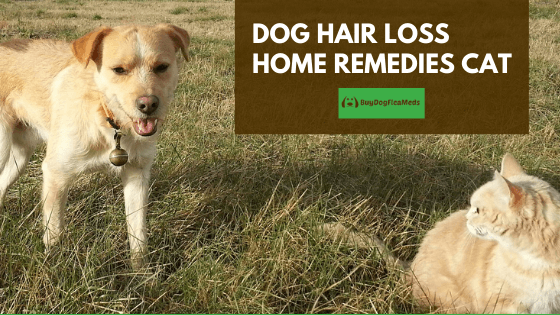Cat & Dog Hair Loss Home Remedies
Everything You Need to Know About Hair Loss in Dogs and Cats
While shedding in dogs and cats is normal, there are some important signs that you need to know as they may cause an alarm. Pet hair loss can be due to trauma, infection, mites, hormonal imbalance, and allergies. But what are the symptoms that often lead to bald spots and excessive thinning of your dog’s hair? Check out this guide to help you understand your pet’s condition.
What Is Hair Loss in Dogs and Cats
Alopecia or dog and cat hair loss is the complete loss or abnormal thinning of hair. It usually happens to pets with underlying issues, such as fleas and mites. Serious or not, this warrants an immediate vet visit to determine the cause and treatment.
Typically, shedding occurs twice every year – during spring and fall. However, there are certain breeds that shed throughout the year. Other reasons for pet hair loss include health conditions like hormonal imbalance, skin infection, food allergies, and scabies.
Different Types of Hair Loss in Dogs
For both cats and dogs, there are many factors that can trigger hair loss. The following are the different types of hair loss that may affect your dog.
Allergies
When you’re allergic, you usually feel itchy, have runny nose and watery eyes. For cats and dogs, allergies are shown through their ears and skin. Normally, they will scratch their hair or chew it out to relieve itchy skin. Your dog may have allergies from food, chemicals, and allergens.
Cushing’s Disease
A hormone called cortisol is released by the adrenals and then carried throughout the body via blood vessels that influence the cells. If the level of cortisol is too high, the dog suffers from a condition called Cushing’s Disease. With an overload in cortisol medication, it can aggravate hair thinning particularly from your dog’s back to its tail.
Infection
Skin infections are usually developed from bites and scratches with bacteria, ringworm, and yeast. They cause itching and pain for dogs and cats, but it could be worse with mites, lice, and other parasites living in your pet’s hair. To get temporary relief from itching, dogs scratch their skin and sometimes chew it off, which leads to hair loss.
Pressure Sores
It’s easy to identify pressure sores because they are usually represented by scaly skin tissues and hard scabs around the joints. Dogs may scratch or gnaw vigorously at the affected areas, which can lead to serious problems such as hair loss.
How to Prevent Hair Loss in Dogs and Cats
There are so many ways to help your pet dog and cat overcome hair loss. If they have allergic alopecia, it’s important to keep your home free from allergens that cause inflammation. You can change their diet by incorporating mild food and avoiding treats that may trigger allergies.
Keep them active by doing daily exercises that reduce stress and anxiety. Tensions with other pets and loud noises can make your dog anxious and stressed out. The best thing to do is remove the causes of stress and allow play time everyday.
Symptoms of Hair Loss in Dogs and Cats
Some of the most common symptoms of hair loss in dogs and cats include bald spots that look symmetrical, scabs, rashes, pimples, bumps, scaling, inflammation and redness. If you see these signs, make sure to visit your veterinarian for a proper treatment to avoid further hair loss.
8 Hair Loss Natural Home Remedies for Dogs and Cats
After your pet is diagnosed with skin conditions and hair loss, you can try these natural remedies that can be found in your home:
- Coconut oil. Whether you use coconut oil topically or in your diet, it helps soften your skin while treating common skin problems. For dogs with dry skin, you can apply some coconut oil to moisturize the skin.
- Apple cider vinegar. The acidic nature of apple cider vinegar (ACV) makes it an effective antibacterial and anti-fungal remedy for dog hair loss. It cleanses the irritated skin to get rid of bacteria and fungi.
- Brush your dog’s hair. Brushing your pet’s hair is a good way to spread natural oils evenly on the coat. It keeps the hair shiny and healthy when done regularly.
- Lemon juice. Just like ACV, lemon juice is also effective in fighting against bacteria while restoring the pH level of affected skin areas due to its acidity. It repairs skin cells to improve hair growth.
- Use topical olive oil. Apply some olive oil on your dog’s rough patches and dry skin to stop hair loss. It’s also effective in eliminating mites and other parasites that cause thin hair.
- Remove allergens from your dog’s diet. Allergies cause skin irritation and inflammation, which eventually lead to hair loss and dry skin. To help your dog keep their coat thick and healthy, get rid of corn, soy, and wheat in their daily diet.
- Flaxseed Oil. Flaxseed is a great source of Omega-3 fat that is essential in maintaining healthy skin and hair. Make sure to incorporate this to your pet’s diet to improve their coat and overall health.
- CBD Oil. When it comes to natural hair loss treatment, CBD oil is one of the most effective options available today. It promotes healthy coat and reduces skin inflammation, especially in the case of allergies. You can apply CBD oil topically on the affected area to treat scaly and inflamed skin.
How Much CBD Should I Give My Dogs and Cats with Hair Loss
For a safe dosage of CBD oil for cats, the standard dose is 0.2 milligram per pound of the cat’s weight. But if you’re not sure how much exactly is good for your pet, you can consult your veterinarian to make sure you are administering it correctly.
Now, if you want to give your dog CBD oil to naturally treat hair loss, you can refer to the dosing instructions provided by your vet as there is no official guideline for CBD dosing for dogs. Basically, dosage depends on the dog’s body weight to determine the exact amount they need. It’s important to follow prescription to avoid overdosing and CBD toxicity in animals.
To effectively treat dog and cat hair loss, it’s always wise to talk to a professional before trying any medications. Veterinarians can provide you with accurate dosing for specific conditions and breeds. Also, it’s important to provide pet history to guarantee proper treatment. After all, it’s your pet’s life on the line and there’s no room for mistakes when it comes to medications.
References
https://cbddoghealth.com/how-do-you-naturally-treat-alopecia-in-cats-and-dogs/
https://www.1800petmeds.com/education/hair-loss-causes-dog-cat-18.htm
https://miraclevet.com/blogs/news/7-home-remedies-for-dog-hair-loss

